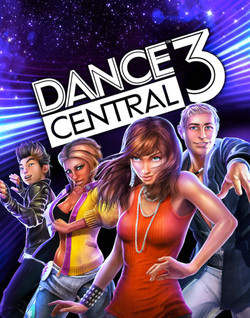|
Release: 2012
Platform: Xbox 360 & Kinect Studio: Harmonix, Backbone Entertainment Publisher: Microsoft dancecentral.com |
By the third installment in the series, Dance Central had found its place as an excellent party guest.
With the introduction of multiplayer in Dance Central 2, many new players discovered the game in the company of friends. We sought to capture this growing audience by including a variety of party modes, dance-lite minigames, and a super-easy level of difficulty. As with Rock Band, we wanted to understand how things might play in the real world. The research lab was arranged to resemble a living room— coffee table, sofa, chairs— and our playtesters were instructed to bring friends. After pushing all of our furniture into the hallway, they settled in and began taking turns, just as they would in real life. The biggest issue was how to determine who was playing and who was not. Kinect would only detect two active players, but tended to struggle when a lot of folks were present. We needed a distinct, simple gesture to distinguish the intended dancers, and the "High-Five to Join" feature was born. Any two people who stood in front of the camera and clapped hands instantly became players, and usually friends. My contributions included...
Typical design questions
|
